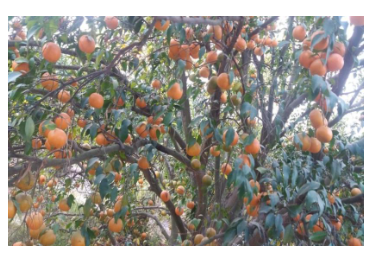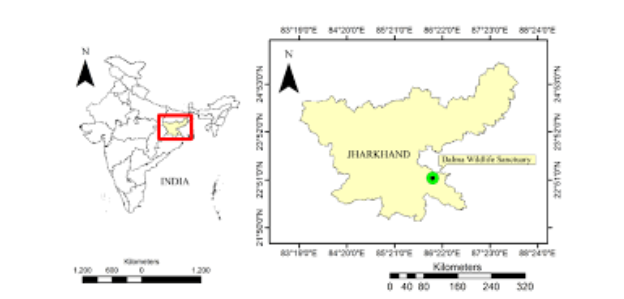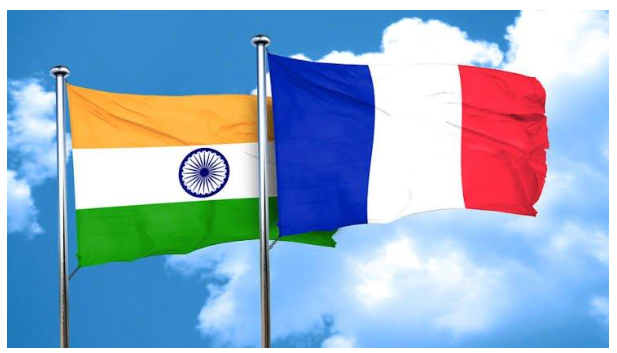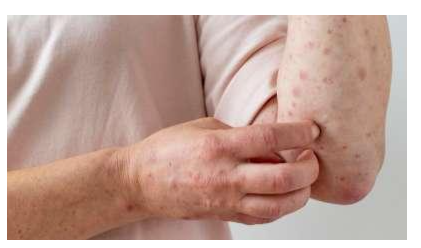Tuesday, 30th January 2024
Europe’s AI Innovation Plan
In News: In response to concerns about excessive regulations on artificial intelligence (AI) in Europe, the European Commission has introduced rules facilitating access to hardware, including supercomputers and computing power.
Europe's AI Innovation Plan
Acquiring and Operating AI-Dedicated Supercomputers
The European Commission has introduced a comprehensive set of measures aimed at supporting startups and small businesses in the development of trustworthy AI. This plan encompasses:
- AI-Dedicated Supercomputers for Fast Machine Learning
- Procuring, upgrading, and operating supercomputers dedicated to AI.
- Facilitating fast machine learning and training of large General-Purpose AI (GPAI) models.
- Widening Access to AI Supercomputers
- Ensuring access to AI-dedicated supercomputers for a broad range of public and private users.
- Focusing on inclusivity, with a particular emphasis on start-ups and SMEs.
- Supporting AI Ecosystem
- Nurturing the AI startup and research ecosystem.
- Providing assistance in algorithmic development, testing, evaluation, and validation of large-scale AI models.
- Promoting Emerging AI Applications
- Enabling the development of various AI applications based on GPAI models.
Reasons for EU's Focus on AI Innovation
- Overregulating AI
- Balancing the human-rights-first approach with the need for innovation.
- Addressing concerns about overregulation hindering AI development in Europe.
- Criticism of AI Act (December 2023)
- Implementation of rules for AI use in the EU.
- Stricter guidelines, limitations on facial recognition, and penalties for rule violations.
Similarities with India's Approach
India's AI Development Program
- Sovereign AI and Computational Capacity
- Emphasizing the need to develop sovereign AI capabilities.
- Building computational capacity within the country.
- Compute-as-a-Service for Startups
- Offering compute-as-a-service to Indian startups.
- Enabling startups to access computational capacity without significant investment.
- Public-Private Partnership Model
- Capacity building within the government and through public-private partnerships.
- Exploring incentive structures for private companies to set up computing centres.
- Digital Public Infrastructure (DPI)
- Creating a Digital Public Infrastructure (DPI) from GPU assembly.
- Allowing startups to utilize computational capacity at a fraction of the cost.
Source: IE
Ethical Use of Generative AI in Healthcare
In News: The World Health Organization (WHO) has issued ethical guidelines for the use and governance of Large Multi-Modal Models (LMM) in healthcare.
Understanding Large Multi-Modal Models (LMM)
- Definition of LMMs
- Large Multi-Modal Models (LMMs) are advanced models designed to replicate human-like perception by utilizing multiple senses.
- This enables AI (Artificial Intelligence) to engage with a broader range of human communication, enhancing the natural and intuitive aspects of interactions.
- Key Features of LMMs
- Integration of Multiple Data Types
- LMMs incorporate various data types, including images, text, language, audio, and other heterogeneous inputs.
- This enables the models to comprehend images, videos, audio, and engage in conversations with users.
- Examples of Multimodal LMMs
- Notable examples of multimodal LMMs include GPT-4V, MedPalm M, Dall-E, Stable Diffusion, and Midjourney.
- Integration of Multiple Data Types
WHO’s Guidelines on LMMs in Healthcare
Applications of LMMs in Healthcare
- Diagnosis and Clinical Care
- Responding to patients' written queries and aiding in diagnosis.
- Patient-Guided Use
- Assisting in investigating symptoms and treatment based on patient input.
- Clerical and Administrative Tasks
- Documenting and summarizing patient visits within electronic health records.
- Medical and Nursing Education
- Providing trainees with simulated patient encounters.
- Scientific Research and Drug Development
- Identifying new compounds for research purposes.
Concerns Raised by WHO
- Rapid Adoption and Need for Caution
- Unprecedented adoption of LMMs raises the importance of carefully assessing benefits versus risks.
- Emphasizes the ability of LMMs to perform tasks without explicit programming.
- Risks and Challenges
- Highlighted risks include the potential for generating false, inaccurate, or biased statements.
- Concerns about data quality and bias perpetuating disparities based on demographic factors.
- Accessibility, Affordability, and Automation Bias
- Broader concerns about the accessibility and affordability of LMMs.
- Risks of Automation Bias in healthcare, leading to potential oversight of errors.
- Cybersecurity
- Recognizes the criticality of cybersecurity given the sensitivity of patient information.
Key Recommendations from WHO
- Collaborative Approach for Development and Deployment
- Calls for collaboration involving governments, technology companies, healthcare providers, patients, and civil society.
- Emphasizes the importance of a global cooperative leadership to regulate AI technologies effectively.
- Ethical Principles and Appropriate Governance
- Advocates for applying ethical principles and appropriate governance during the design, development, and deployment of AI for health.
- Highlights WHO's six core principles, including autonomy protection, promoting human well-being, transparency, responsibility, inclusiveness, and sustainability.
Source: DTE
Third South Summit
In News: The Group of 77 (G77) and China recently convened for the 3rd South Summit in Kampala, Uganda.
Group of 77 (G77)
Establishment and Structure
- Formation of G-77
- Established on June 15, 1964, following the "Joint Declaration of the Seventy-Seven Developing Countries" at the UNCTAD session in Geneva.
- Currently has 134 members, excluding China, which provides political and financial support.
- Aims of G-77
- Largest intergovernmental organization of developing countries in the UN.
- Facilitates articulation of collective economic interests and enhances joint negotiating capacity on international economic issues.
- Structure and Leadership
- Chairman acts as the spokesperson, with a rotational basis among regions (Africa, Asia-Pacific, Latin America, and the Caribbean).
- Chapters in different locations coordinate activities and represent interests in various UN agencies.
- South Summit
- The supreme decision-making body held to discuss key issues.
- Previous summits in Havana (2000) and Doha (2005).
Key Highlights of the Third South Summit Outcome Document
- Palestinian-Israeli Conflict
- Emphasis on a just and peaceful solution.
- Recognition of the interdependence of sustainable development and peace.
- Universal Implementation of Agendas
- Reaffirmation of commitment to global agendas like the 2030 Agenda, Paris Agreement, and others.
- Stress on adequate means of implementation for poverty eradication.
- Poverty Eradication
- Reiteration of poverty eradication as a global challenge.
- Call for developed countries to commit to a strengthened global partnership.
- Strengthening Multilateral Institutions
- Emphasis on reforming the international financial architecture.
- Proposals for deep reforms, including an SDG Stimulus and increased climate finance.
- Financing Needs and Debt Solutions
- Urging Multilateral Development Banks to meet financing needs through concessional finance and grants.
- Call for scaling up debt swaps for SDGs.
- Urgent Reforms for Inclusion
- Demand for urgent reforms in multilateral organizations.
- Recognition of the significance of the Global South in the international financial system.
Global South
- Definition and Historical Context
- Diverse Concept of Global South
- Encompasses countries facing developmental challenges, not solely defined by geography.
- Geopolitical, historical, and developmental factors contribute to its diversity.
- Brandt Line
- Proposed by Willy Brandt as a representation of the north-south economic divide.
- Symbolizes global economic disparities, zigzagging across continents.
- G-77 Formation
- Formed in 1964, a coalition of developing nations addressing economic and development issues at the UN.
- Represents primarily the Global South in collective efforts.
- Diverse Concept of Global South
- Resurgence of Global South
- Economic Dynamics
- Covid-19 exposed economic imbalances, impacting Global South disproportionately.
- Reevaluation of trade and supply chains presents restructuring opportunities.
- Geopolitical Realities
- Increased collective voice in international forums like G20.
- Altered power dynamics and greater consideration of Global South perspectives.
- Environmental and Climate Impact
- Economic Dynamics
- Disproportionate vulnerability to climate change.
- Emphasis on sustainable development, renewable energy, and climate action within the Global South.
|
UPSC Previous Year Questions Prelims (2020) Q. In which one of the following groups are all the four countries members of G20? (a) Argentina, Mexico, South Africa and Turkey Ans: (a) Mains (2019) Q. ‘The long-sustained image of India as a leader of the oppressed and marginalised nations has disappeared on account of its new found role in the emerging global order.’ Elaborate. |
Source: AN
Pulsar Glitches
In News: In 1967, astronomers at the University of Cambridge uncovered the first pulsar, later named PSR B1919+21, initiating a journey into the mysteries of neutron stars and their enigmatic pulsar counterparts.

Understanding Pulsars
- Nature of Pulsars
- Pulsars are rapidly rotating neutron stars emitting pulses of radiation at regular intervals.
- Strong magnetic fields funnel particles along magnetic poles, producing beams of light.
- Periodicity and Observation
- The periodicity of pulsars results from Earth observing the beams of light.
- Pulsars 'switch off' when beams are facing away from Earth, determining the pulse period.
Theories Related to Pulsar Discovery and Behaviour
Link with Neutron Discovery
- Discovery Context
- Pulsar discovery linked to James Chadwick's 1932 discovery of neutrons.
- Neutron stars form from collapsing cores of massive stars not becoming black holes.
- Pulsars as Rotating Neutron Stars
- Signals from a small sky patch, repeating frequently, identified as rotating neutron stars.
- Radio signals emitted near star poles create a sweeping cone observed on Earth.
- Unexpected Glitches
- Neutron stars experience rotation slowing over time.
- Glitches, sudden changes in rotation followed by gradual relaxation, add complexity.
- Pulsar Dynamics Exploration
- Over 3,000 pulsars observed, around 700 glitches recorded.
- Glitches prompt deeper investigations into pulsar dynamics.
Formation of Pulsars
Supernova Explosion
- Supernova Origin
- Pulsars form from remnants of massive stars (1.4 to 3.2 times Sun's mass) undergoing supernova.
- Supernova explosion expels outer layers, inner core contracts.
- Neutron Star Formation
- Gravity crushes electrons and protons together, forming neutrons.
- Resulting neutron star has extreme density and strong gravitational field.
- Angular Momentum Conservation
- Collapse conserves angular momentum.
- Smaller size post-collapse leads to dramatic increase in rotational speed.
- Pulsar Emission
- Rapidly rotating neutron star emits electromagnetic radiation beams along magnetic field lines.
- Earth observing these beams produces periodic pulses, identifying it as a pulsar.
Occurrence of Glitches in Pulsars
- Neutron Star Dynamics
- Neutron star, with solid crust and superfluid core, shapes celestial dynamics.
- Interaction between crust's deceleration and sustained superfluid core vortex speed leads to glitches.
- Presence of Superfluid State
- Post-glitch behaviour suggests a superfluid state within neutron stars.
- Neutron star, 20 km wide, comprises solid crust and superfluid core.
- Unique Properties of Superfluids
- Superfluids, exhibiting perpetual motion without friction, play a crucial role.
- Understanding superfluid behaviour helps comprehend glitch origins in neutron stars.
|
UPSC Previous Year Questions Prelims (2019) Q. Recently, scientists observed the merger of giant ‘blackholes’ billions of light-years away from the Earth. What is the significance of this observation? (a) ‘Higgs boson particles’ were detected. (b) ‘Gravitational waves’ were detected. (c) Possibility of intergalactic space travel through ‘wormhole’ was confirmed. (d) It enabled the scientists to understand ‘singularity’ Ans: (b) Prelims (2008) Q. Consider the following: Assertion (A): Radio waves bend in a magnetic field. Reason (R): Radio waves are electromagnetic in nature. Which of the following is correct? (a) Both A and R are individually true, and R is the correct explanation of A (b) Both A and R are individually true, but R is not the correct explanation of A (c) A is true but R is false (d) A is false but R is true Ans: (a) |
Source: TH
Bharat Ratna to Karpoori Thakur
In News: The President of India has recently declared the posthumous awarding of the Bharat Ratna to the late socialist leader and former Chief Minister of Bihar, Karpoori Thakur.

Karpoori Thakur: A Brief Overview
- Political Leadership
- Renowned Indian politician, known as "Jan Nayak," served as Bihar's 11th Chief Minister twice (1970-71, 1977-79).
- Early Life and Political Foundation (1942-1967)
- Freedom fighter and staunch socialist influenced by leaders like Jayaprakash Narain, Dr Rammanohar Lohia, and Ramnandan Mishra.
- Represented the Nai community, categorized as an Extremely Backward Class (EBC) within OBCs.
- Entered politics in 1952, remained a legislator until 1985.
- Chief Ministerial Term and Policies
- In 1977, Mungeri Lal Commission under his Chief Ministership recommended reclassifying backward classes into extremely backward classes, including weaker sections of Muslims.
- Introduced a pioneering reservation model in 1978, allocating 26% of reservations with specific quotas for OBCs, EBCs, women, and economically backward classes among upper castes.
- This reclassification was considered a precursor to the Mandal Commission report advocating for 27% reservations for Other Backward Classes.
- Implemented diverse policies, such as promoting Hindi and Urdu as official languages, waiving school fees, and strengthening Panchayati Raj.
|
UPSC Previous Year Questions Prelims (2021) Q. Consider the following statements in respect of Bharat Ratna and Padma Awards:
Which of the above statements are not correct? (a) 1 and 2 only Ans: (d) |
Source: TH
Investment Forum for Advancing Climate Resilient Agrifood Systems in India
In News: In New Delhi, NITI Aayog, the Ministry of Agriculture, and the Food and Agriculture Organization jointly launched the 'Investment Forum for Advancing Climate Resilient Agrifood Systems in India.'
Investment Forum for Advancing Climate Resilient Agrifood Systems in India: Overview
- Initiative Objective
- The initiative aims to formulate an investment and partnership strategy promoting climate-resilient agrifood systems among diverse stakeholders in India.
- Discussion Focus Areas
- The forum facilitated discussions on six key areas:
- Climate resilient agriculture (experiences and pathways).
- Digital infrastructure and solutions.
- Financing climate resilient agrifood systems (domestic and global).
- Climate resilient value chains.
- Production practices and inputs for climate resilience.
- Gender mainstreaming and social inclusion for climate resilience.
- Significance of Investing in Climate-Resilient Agrifood Systems
- Climate change poses significant challenges for India, impacting its economically vulnerable rural population dependent on climate-sensitive agricultural livelihoods.
- Agriculture, contributing 13% of total greenhouse gas emissions, is susceptible to extreme temperatures, droughts, floods, cyclones, and soil salinity.
- Impacts include potential disruptions in crop yields, water availability, soil health, pest and disease outbreaks, and food security.
- Climate-resilient agrifood systems play a crucial role in mitigating and adapting to climate change, enhancing food production, reducing poverty, and improving livelihoods.
- Necessity for Larger Investments
- The mainstreaming of climate considerations into agrifood systems requires substantial investments from global climate finance, domestic budgets, and the private sector.
|
UPSC Previous Year Questions Prelims (2016) Q. The FAO accords the status of ‘Globally Important Agricultural Heritage System (GIAHS)’ to traditional agricultural systems. What is the overall goal of this initiative?
Select the correct answer using the code given below: (a) 1 and 3 only Ans: (b) Prelims (2011) Q. With what purpose is the Government of India promoting the concept of “Mega Food Parks”?
Select the correct answer using the codes given below: (a) 1 only Ans: (b) Mains (2017) Q. Explain various types of revolutions, took place in Agriculture after Independence in India. How these revolutions have helped in poverty alleviation and food security in India? (2017) |
Source: PIB
Kinnow Farming
In News: Punjab's Kinnow growers are concerned about potential losses this season, as almost 50% of the 13 lakh tonnes of the crop remains unharvested with less than two months left in the season.

Overview of Kinnow Farming
- Citrus Fruit Description
- Kinnow/Mandarin, pronounced as Kinoo or Kinu, is a citrus fruit cultivated in North India.
- Major Cultivation Areas
- Punjab dominates Kinnow/Mandarin production, with other contributing states like Rajasthan, Haryana, Madhya Pradesh, Himachal Pradesh, and Jammu and Kashmir.
- Hybrid Nature
- A hybrid of Citrus nobilis and Citrus deliciosa, Kinnow is often confused with Oranges due to similar appearances, seasonal availability, and nutritional benefits.
- Juice Content
- Known for high juice content, Kinnows are ideal for juice and pulp extraction.
- Climatic Conditions
- Temperature: Thrives in a range of 10-35°C, withstanding temperatures from 0°C in winter to 40°C in summer.
- Soil: Well-drained clay-loam with a pH of 6.0-7.5 is ideal.
- Rain: Requires 300-400mm.
Key Facts about Citrus Fruit
- Origins and Types
- Citrus originates in South East Asia, including varieties like Kinnow, Oranges, Lime, and Lemon.
- Importance in India
- In India, Citrus ranks as the third-largest fruit crop after Banana and Mango.
- Citrus fruits, rich in Vitamin C, play a vital role in nutrition.
Source: HT
Western Equine Encephalitis Virus (WEEV) Infection
In News: Argentina's International Health Regulations National Focal Point (IHR NFP) has notified the World Health Organization about a human case of Western Equine Encephalitis Virus (WEEV) infection.
Overview of Western Equine Encephalitis Virus
- Causative Agent
- Western Equine Encephalitis Virus (WEEV) is responsible for this mosquito-borne infection, belonging to the Togaviridae virus family.
- Genomic Characteristics
- The virus possesses a single-stranded RNA genome approximately 11.5 kilobases in length.
- It is a recombinant virus, originating from the eastern equine encephalitis virus (EEEV) and a Sindbis-like virus.
- Reservoirs and Intermediate Hosts
- Passerine birds are considered the reservoirs for the virus.
- Equine species serve as intermediate hosts.
- Mode of Transmission
- Mosquitoes act as vectors, transmitting the infection to humans.
- Symptoms
- While the majority of infections are asymptomatic, rare cases may lead to severe consequences.
- An estimated 4-5% of cases may result in brain infection/inflammation, leading to neurological symptoms and potential disease sequelae.
- Treatment
- No specific antiviral treatment is available.
- Symptomatic care is crucial, particularly for managing neurological symptoms.
Source: TH
Dalma Wildlife Sanctuary
In News: The construction of a canopy walk facility, elevated at 25 feet, is underway at Dalma Sanctuary.

Dalma Wildlife Sanctuary: Overview
- Location
- Situated 10 kilometres from Jamshedpur in Jharkhand.
- Nestled around the Dalma Hills on the Chottanagpur Plateau.
- Name Origin
- Named after "Dalma mai," a local goddess revered by the nearby communities.
- Establishment
- Inaugurated in 1975.
- Encompasses a substantial Indian Elephant population.
- Geographical Coverage
- Spans nearly 193 sq. km. of forest area.
- Falls within the catchment area of Subarnarekha River and Dimna Lake of Jamshedpur.
- Vegetation
- Features "Dry peninsular Sal" and "Northern dry mixed deciduous Forest" categories.
- Abundance of medicinal plants like Ananatmula, Satawari, Sarpgandha, along with diverse trees, climbers, herbs, shrubs, and orchids.
- Fauna
- Houses a significant population of Indian Elephants.
- Other wildlife includes barking deer, wild boar, giant squirrel, porcupine, pangolin, sloth bear, etc.
- Avian Diversity
- Bird species such as falcons, golden oriole, Indian tree pie, paradise flycatchers, grey hornbills, Indian peafowl, are commonly observed.
Source: IT
Alpenglow Phenomenon
In News: Astronaut Lora O'Hara, currently aboard the International Space Station, has recently shared captivating images capturing the Alpenglow phenomenon near the Hindu Kush mountain range.

Alpenglow: Overview
- Natural Phenomenon
- Alpenglow is a natural occurrence observed when mountain slopes are illuminated by the rising or setting sun.
- Colour Transformation
- Mountain slopes take on rosy, reddish, or orange hues, influenced by the sun's angle and atmospheric conditions.
- Timing of Occurrence
- Typically happens during twilight hours before sunrise or after sunset.
- Can also occur in the initial minutes after the sun rises or sets.
- Colour Range
- Alpenglow manifests in colours spanning red, pink, and orange.
- These colours result from the longest warm rays of electromagnetic waves reaching various surfaces.
- Factors Influencing Vibrancy
- Vibrancy and colour depend on the sun's location, light angle, and atmospheric conditions like clouds, humidity, and particulates.
- Dynamic Nature
- Alpenglow can change rapidly based on the speed of the sun's descent on any given day.
Source: REPUBLIC
Examining the Growing Disparity in Incomes
In News: The recent report from the State Bank of India (SBI) underscores a significant decline in income inequality in India over the last ten years.
Assessment of SBI’s Report on Reduction in Inequality
- Gini Coefficient Reduction
- The SBI report highlights a significant reduction in the Gini coefficient, measuring income inequality, from 0.472 in 2014-15 to 0.402 in 2022-23.
- Magnitude of Change
- The 15% drop in the Gini coefficient signifies substantial improvement in income equality over a decade, indicating a sustained trend.
- Positive Implications
- A reduced Gini coefficient is viewed positively, suggesting progress toward more equitable income distribution.
- Implications for policymakers include potential success in addressing disparities through economic policies or social programs.
A Critical Assessment of SBI Report
- Taxpayer Data Limitations
- Concerns arise due to the reliance on taxpayer data, excluding about 80% of income-earners below taxable thresholds.
- Representativeness of findings is questioned, impacting the understanding of true income inequality.
- Exclusion of Low-Income Earners
- SBI's analysis excludes low-income individuals, a substantial portion of the population.
- This exclusion raises concerns about accurately representing economic conditions.
- Sensitivity to Economic Disparities
- Critics suggest economic disparities within the taxpayer base may influence the reported reduction in the Gini coefficient.
- Accuracy of findings may be compromised if a significant portion of low-income individuals is excluded.
- Absence of Supplementary Data
- Critics propose incorporating additional sources like Periodic Labour Force Survey (PLFS) data.
- PLFS can offer a holistic view of income distribution, considering a broader spectrum of earners.
- Analysis of Reduction in Inequality According to PLFS Data
- PLFS records gross incomes of self-employed, allowing a detailed analysis.
- Gini coefficient decline is observed, but income inequality among top earners may have fallen more than the general population.
Polarisation of Incomes
- Divergence in Income Growt
- Top decile's income grows faster than the bottom 20%, leading to income divergence.
- The 90/10 ratio increases, indicating a wider gap between top and bottom incomes.
- Rise in Women’s Labor Force Participation
- Contradictory findings may be linked to the documented rise in women’s labour force participation, particularly in low-paid self-employed work.
- Increased Household Earnings
- While households earn more due to increased labour force participation, low-paid self-employed work contributes to income dynamics.
- Polarisation Among Income-Earners
- Increase in low-paid self-employed work contributes to polarisation among income-earners.
Conclusion
- While the reduced Gini coefficient is positive, income polarisation among the self-employed complicates the overall analysis.
- Policymakers should consider nuanced understanding of income dynamics for effective interventions.
Source: TH
Share the article
Edukemy’s Current Affairs Quiz is published with multiple choice questions for UPSC exams
MCQ
Get Latest Updates on Offers, Event dates, and free Mentorship sessions.

Get in touch with our Expert Academic Counsellors 👋
FAQs
UPSC Daily Current Affairs focuses on learning current events on a daily basis. An aspirant needs to study regular and updated information about current events, news, and relevant topics that are important for UPSC aspirants. It covers national and international affairs, government policies, socio-economic issues, science and technology advancements, and more.
UPSC Daily Current Affairs provides aspirants with a concise and comprehensive overview of the latest happenings and developments across various fields. It helps aspirants stay updated with current affairs and provides them with valuable insights and analysis, which are essential for answering questions in the UPSC examinations. It enhances their knowledge, analytical skills, and ability to connect current affairs with the UPSC syllabus.
UPSC Daily Current Affairs covers a wide range of topics, including politics, economics, science and technology, environment, social issues, governance, international relations, and more. It offers news summaries, in-depth analyses, editorials, opinion pieces, and relevant study materials. It also provides practice questions and quizzes to help aspirants test their understanding of current affairs.
Edukemy's UPSC Daily Current Affairs can be accessed through:
- UPSC Daily Current Affairs can be accessed through Current Affairs tab at the top of the Main Page of Edukemy.
- Edukemy Mobile app: The Daily Current Affairs can also be access through Edukemy Mobile App.
- Social media: Follow Edukemy’s official social media accounts or pages that provide UPSC Daily Current Affairs updates, including Facebook, Twitter, or Telegram channels.





